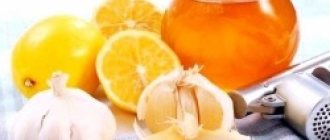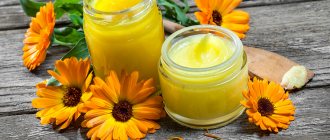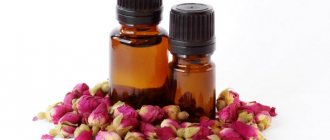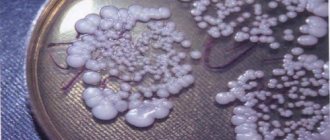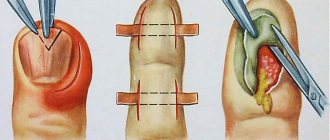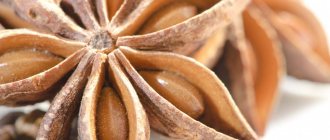The article was prepared by a specialist for informational purposes only. We urge you not to self-medicate. When the first symptoms appear, consult a doctor.
It's no secret that the treatment of any gastric disease requires the patient to follow a diet. This is the only way to normalize the full functioning of the gastrointestinal tract and eliminate many unpleasant symptoms. This rule also applies to reflux esophagitis, an extremely common pathology of the digestive system. The main signs of reflux esophagitis are heartburn, belching, pain and a burning sensation in the sternum. Symptoms are usually worse after eating or lying down.
Acid reflux occurs when the contents of the stomach enter a person's esophagus. This pathological condition is also called gastroesophageal reflux or acid regurgitation, or simply GERD.
But how does it differ from ordinary heartburn? Heartburn is one of the typical symptoms of acid reflux. Most people experience this condition occasionally, so it does not cause them much concern. But a frequent feeling of heartburn (twice a week or even more often) may indicate the presence of GERD, a chronic type of reflux that can provoke the development of unpleasant complications if left untreated. This pathology occurs in 20% of people.
Enveloping agents
The leading cause of reflux esophagitis is the reverse reflux of hydrochloric acid from the stomach. Acid causes inflammation of the esophagus. Enveloping drugs contain a lot of starch. By absorbing water, it becomes a gel and covers the walls of the esophageal canal with a protective layer. In the treatment of GERD with folk remedies, special attention is paid to the following plants.
Flax seed
They are rich in biologically active substances - pectin, fiber, fatty acids, selenium, potassium, B vitamins. You can get viscous jelly by pouring two tablespoons of seeds into 500 ml of warm boiled water overnight. In the morning, place the infusion in a water bath and simmer for 20 minutes. Let cool and strain. Take 100 ml between meals 4 times a day. The course of treatment is 2 weeks.
Oats
Gives a healing mucous decoction that softens gastroesophageal reflux.
Thick oatmeal jelly has a traditional method of preparation: pour 700 ml of water into a glass of oatmeal and add a bread crust. Cover the container with a loose lid. The oat mass will ferment within 24 hours. If a sour smell appears, drain through a colander or medium-mesh sieve. Boil the strained infusion for 3 minutes over medium heat, stirring. Before serving, add honey and berries to taste.
Treatment of GERD
The main condition for drug treatment is the immediate elimination of GERD symptoms and the consequences. To do this, the doctor prescribes antisecretory drugs - Omeprozole, Rabeprozole and Pantoprozole in combination with Alfazox. Alfazox is designed to protect and restore damaged esophageal mucosa. It acts directly in the esophagus, attaching to the mucosa and restoring it thanks to the action of the components: hyaluronic acid and chondroitin sulfate. These substances heal damage and erosion of the mucous membrane and reduce inflammation.
We recommend reading: Symptoms of ulcerative colitis of the intestine and features of treatment at home
During bile reflux, ursodeoxycholic acid and prokinetics are prescribed.
The duration of treatment and dosage depend on the degree of the disease and the individual characteristics of the body.
To relieve heartburn or belching, you can take Gaviscon-Forte and Phosphalugel for a short time.
When diagnosing GERD in children, experts recommend not to overfeed and keep the baby in an upright position after eating. For infants, porridges and mixtures are prescribed to thicken food, which reduces the amount of regurgitation.
In older children, in combination with antisecretory drugs, it is necessary to follow a diet. Fatty and spicy foods are contraindicated; after eating, you should not lie down, bend over or run.
Surgical treatment is prescribed when traditional treatment is ineffective, when the number of refluxes per day exceeds fifty times. If the esophageal mucosa is damaged, ulcers, hernias or narrowing of the esophageal sphincter appears, urgent surgery is advisable.
There are cases when a patient has an allergic reaction to all drugs prescribed for the treatment of GERD. In this case, drug therapy cannot be carried out; surgical treatment is prescribed.
A doctor of the highest category tells more about why GERD occurs in children, symptoms and treatment, watch the video:
Lifestyle and nutrition
For effective treatment, the patient needs to change his lifestyle and start eating right.
First you need to give up alcohol and tobacco. Remove coffee, chocolate, hot sauces, fatty, spicy and sour foods from your daily diet.
To prevent gas formation and increased intra-abdominal pressure, it is necessary to exclude various spices and legumes.
The attending physician strongly recommends that the patient eat lean meat, fresh vegetables, various cereals and eggs.
Sports and physical activity are contraindicated during treatment for GERD. This provokes abdominal tension, leading to an increase in intra-abdominal pressure and the development of complications.
Reducing stomach acidity
Gastroesophageal reflux disease is manifested by a burning sensation in the chest. The following remedies will help with increased gastric acidity.
Soda
Sodium bicarbonate is an alkaline base and reacts with hydrochloric acid, precipitating it in the form of table salt, carbon dioxide and water. Soda for severe heartburn should be drunk exclusively as a symptomatic remedy, no more than once a week. Dissolve a third of a teaspoon of powder in 100 ml of cold boiled water.
Drink soda water in small sips. This is one of the most effective folk remedies for reflux.
Vegetable juices
Carrot, beet, and potato juice have a slightly alkaline reaction. Used in the treatment of esophageal esophagitis to relieve heartburn and belching after eating. The washed, peeled root vegetables are grated on a fine grater and squeezed through a double layer of gauze. The concentrated juice is diluted by half with water. Drink 100 ml of diluted juice with meals up to 4 times a day. You can be treated for a long time, periodically changing the root crop.
How to treat with folk remedies?
The danger of esophagitis is the asymptomatic nature of the first stages, when the disease is easier to cure. With constant exposure to digestive juice thrown back into the esophagus due to reflux, severe irritation of the walls of the esophagus occurs with damage to the mucous membrane. As a result, unpleasant symptoms appear in the form of heartburn, belching, burning pain and other manifestations. Many of them are easily eliminated with folk remedies.
But before starting treatment, you should consult your doctor. Only a specialist can create a suitable therapeutic course that will not cause harm. In addition to using non-traditional recipes, the patient will be required to:
THIS IS REALLY IMPORTANT! Heartburn should not be left untreated - it can lead to esophageal cancer. It's better to play it safe and get rid of heartburn forever. FIND OUT >>
- lifestyle change;
- improving the quality of nutrition;
- taking certain medications.
The treatment regimen using alternative medicine methods is based on the simultaneous use of two approaches:
THIS IS REALLY IMPORTANT! Right now you can find out a cheap way to get rid of problems with heartburn and the gastrointestinal tract. FIND OUT >>
- optimal selection of medicinal nutrition products;
- treatment with herbal recipes.
Return to contents
Improves gastric motility
Herbal infusions for reflux esophagitis normalize organ motility and accelerate the evacuation of gastric contents. The following remedies can be prepared for gastrointestinal congestion.
Collection No. 1
Crushed herb St. John's wort, leaves of the trifoliate, tansy inflorescences, valerian root, calamus rhizome. Mix dry raw materials, a teaspoon of each type of herb. Brew a tablespoon of the mixture with 400 ml of boiling water in a thermos and leave for 2 hours. Take cooled, strained 100 ml an hour before meals three times a day.
Collection No. 2
Dandelion root, sage leaves, cinquefoil erecta, cordate linden flowers, dill fruits. Pour three teaspoons of herbal mixture into two glasses of boiling water and leave for an hour. Drink a fresh infusion of the collection an hour before meals 3-4 times a day.
Treatment of esophagitis with folk remedies made from herbs continues for 2-3 weeks. Then they take a break for a month and repeat, changing the collection.
ethnoscience
Reflux esophagitis can also be treated with folk remedies. They primarily help reduce stomach acidity and thereby alleviate the condition of this disease.
Herbal preparations effectively cope with reflux esophagitis
The most effective are the following recipes:
- herbal collection;
- potato juice;
- wheat grains.
The herbal mixture is prepared from chamomile flowers (20 g), flaxseed (20 g), lemon balm leaves (10 g) and licorice root (10 g). All components are crushed and mixed together, after which they are poured with one liter of boiling water. The composition is kept in a water bath for about ten minutes, and then infused for another two hours. When the decoction is ready, you need to strain it and take 5 ml four times a day for two weeks. This collection based on beneficial herbs helps get rid of heartburn and say goodbye to inflammation of the stomach walls, and also reduces unpleasant symptoms.
Bactericidal agents
The overwhelming majority of gastritis and ulcers are caused by the bacterium Helicobacter pylori. Treatment of reflux esophagitis with folk remedies involves antimicrobial therapy with the following drugs.
Apple vinegar
Obtained from fermented apple juice. Contains fruit acids, vitamins, enzymes, minerals. For GERD with esophagitis, it is used in combination with honey and St. John's wort. Pour 100 ml of apple cider vinegar over a tablespoon of St. John's wort and leave for 7 days in a cool, dark place. Add 100 ml of honey to the strained liquid. You can keep it in a water bath for better dissolution. Three times a day, an hour before meals, dissolve a teaspoon of the resulting product in your mouth. Traditional methods of treatment involve taking the medicine for a month. Do not use in the acute phase.
Propolis
A bee product, a sticky substance that bees use to seal and disinfect their honeycombs. Since ancient times it has been known as a medicine with powerful healing effects. Active against a wide range of microbes.
To treat inflammation of the esophagus, propolis tincture is used. It is prepared like this: grate 10 g of pre-frozen propolis on a fine grater and add cold water. Drain the debris that floats to the top. Place in a fine sieve and dry the sediment. Mix with 100 ml of vodka and simmer in a water bath, without bringing to a boil, until the solution becomes homogeneous. Remove from heat, strain through a fine sieve, and pour into a tightly sealed bottle. Store in a dark, dry, cool place. Consume an hour after breakfast, adding 15-20 drops to 100 ml of water or milk. The course of treatment is 2 weeks.
Propolis and apple cider vinegar are products that help get rid of symptoms such as heartburn, belching, and painful sensations in the esophagus when swallowing. They activate the immune system, stimulate hematopoiesis, and strengthen blood vessels.
Causes and principles of treatment of reflux esophagitis with folk remedies
Any of the methods allows you to eliminate one symptom of the disease. In most cases, treatment of GERD with folk remedies relieves severe heartburn, pain and other unpleasant symptoms. Unconventional methods will not help improve the function of the esophageal sphincter, which cannot function fully in people suffering from gastroesophageal reflux disease. Malfunction of the sphincter often causes the disease. All this must be taken into account when treating:
- Features of the diet. Eating junk food aggravates esophagitis and complicates the course of GERD. Therefore, you should switch to a balanced diet. Meals should be fractional, you need to eat 5-6 times a day. Doctors advise cooking food in a double boiler, boiling, or baking in the oven. At the same time, dishes are cooked in the oven several times during the week. Doctors advise eating most of your food before lunch. Do not eat cold or too hot foods. It is highly undesirable to eat at night; the last meal should not be later than 7 pm. You should not eat “on the run” or have a “dry” snack. After eating, do not bend over and avoid physical activity. It is important to remember that certain raw fruits and berries can cause heartburn. And fruit and berry jelly and fruits cooked in a double boiler should not cause discomfort. Therefore, you should consult a specialist about the possibility of including these products in your diet; he will help you plan your diet depending on the characteristics of your body. In addition, you should adhere to the drinking regime: the patient should drink at least 2 liters of liquid. If the patient has erosive GERD, then food should be processed (mechanical, thermal) in order to minimize the load and facilitate the functioning of the digestive system. You can cook and eat foods that your doctor has approved. In case of exacerbation of the disease reflux esophagitis, the patient should exclude raw vegetables and fruits from the diet. In the first few days, it is recommended to eat porridge, pureed soups, and drink fermented milk products. Gastroesophageal reflux disease involves avoiding drinking soda and alcoholic beverages. In addition, it is necessary to exclude sour, pickled dishes, and pickles.
THIS IS REALLY IMPORTANT! Cheap product No. 1 for the stomach and esophagus. FIND OUT >>
- Mineral water. Doctors advise treating gastroesophageal pathology with heated water with a small amount of alkalis. For the best effect, the water is heated to 40 degrees - this method eliminates bubbles. Patients with GERD should not drink soda, since the gases have a bad effect on the functioning of the esophageal sphincter. What is the benefit of this technique, and how can it be used to treat patients with GERD symptoms? The salts contained in the water bind excess acid in the abdominal cavity, dilute the acidity, reducing pain and burning. To get rid of symptoms, you need to drink water half an hour after eating. Immediately after a meal, water with minerals will stretch the stomach, and this will only provoke pain. Sometimes boiled water can help: you should take a couple of sips; if nausea occurs after eating food or on an empty stomach, you can get rid of unpleasant symptoms for a short time.
- Juice therapy. Fresh potato juice has an excellent effect on patients with GERD: the starch it contains helps alleviate the condition of the patient. The juice envelops the abdominal cavity and part of the esophagus. Thus, potato starch is used in the treatment of gastroesophageal disease to protect the mucous membrane from acidity. The functions of the lower esophageal sphincter cannot be restored thanks to starch, but it will eliminate the negative effect of acid on the surface of the mucosa. The juice of the aloe plant has also long been used to cure symptoms of gastritis and other inflammations in the digestive system. The best result can be achieved by using a mixture of aloe and natural honey diluted in water. It is recommended to use the drug several times a day, both on an empty stomach and after meals. Remember that undiluted honey is not recommended for use if you develop GERD, but once dissolved in water it is not so harmful. On the contrary, honey with aloe relieves inflammation, accelerates tissue regeneration, improves immunity, and protects the mucous membrane of the esophagus and abdominal cavity.
- Phytotherapy. How to get rid of the signs of GERD using folk remedies such as herbs? There are different recipes, but you should consult your doctor before using them. If there are no contraindications, then with the permission of a specialist, you can use this mixture with herbs: mix chamomile, St. John's wort, lemon balm leaves in equal parts, brew the herbs and leave for 15 minutes. You can take the medicine after meals. The dosage of the herbal infusion is determined by the doctor. The collection contains many vitamins, it soothes, heals wounds and injuries, and relieves inflammation of the mucous membrane. Nettle also has anti-inflammatory properties. It can be used in soups. Before this, the leaves and grass are finely chopped and chewed thoroughly so that the body absorbs the nutrients faster. An infusion of flax seed helps in the treatment of the disease along with medications and dietary nutrition. Flaxseed is very beneficial. Flax grains contain fiber, copper, phosphorus, magnesium, manganese, etc.
Other means
- Propolis. To prepare 10 grams of propolis tincture, you should grind it and add 70 percent alcohol in an amount of 100 ml. The mixture is stored for 10 days in a cool place where light does not penetrate. Take propolis tincture at night. First dissolve 20 drops of the finished mixture in ½ cup of warmed milk. The effect will appear after a week of use. Therapy should be continued for a month.
- Chaga tincture. Such parasitic fungi grow on the trunks of birch trees. To treat ailments of the digestive system, the mushroom is crushed, poured with boiling water, and left for 60 minutes. You need to take the remedy three times a day when discomfort occurs. However, you need to use the medicine with caution, since allergies and other undesirable manifestations are possible.
Healing agents
In severe cases, esophagitis is complicated by damage to the mucous membrane - erosions. It is recommended to treat erosive esophagitis with propolis, sea buckthorn oil, and linseed oil.
Sea buckthorn
A plant with high biological value. Sea buckthorn is a source of carotenoids, B vitamins, ascorbic acid, tocopherol, flavonoids, and minerals. Sea buckthorn oil has a wound healing and anti-inflammatory effect for reflux esophagitis. To heal the esophagus, use a teaspoon of oil orally 30 minutes before meals, 2 times a day. Take 3-4 weeks. The healing qualities of sea buckthorn are so great that it is used to treat cicatricial narrowing of the esophageal canal. Fresh scars are reduced, the walls of the esophagus become elastic.
Sea buckthorn oil is sold in pharmacies, but you can prepare it yourself. Sort and rinse a glass of ripe sea buckthorn, discarding damaged berries. Place the berries in a 0.7-1 liter glass jar. Crush thoroughly with a wooden masher. Pour 500 ml of vegetable oil, close the lid, leave for a week in a dark place. Strain the oil and store in a cool, shaded compartment of the cupboard.
Linseed oil
Supplies the body with Omega-3 fatty acids, vitamins, and minerals. Regulates the absorption of vitamins A, D, E. Has a beneficial effect on the mucous membrane, accelerates tissue regeneration without the formation of scars and strictures.
Flaxseed oil should not be allowed to oxidize. Store it in a dark, glass, tightly sealed bottle at a temperature no higher than +15°C, protecting it from sunlight. Bitter oil should not be used. Drink a teaspoon an hour before meals, 2 times a day for 10 days.
Symptoms and forms of the disease
After the contents of the stomach are released into the esophagus, irritation of its internal membranes appears, leading to inflammatory processes. Therefore, heartburn and belching are considered common manifestations of the disease.
Heartburn is a burning sensation behind the sternum, which over time rises from the epigastric region to the top. Symptoms appear a few hours after eating or during night sleep. Heartburn may be accompanied by pain in the neck and shoulders. The causes of burning can be carbonated drinks drunk in large quantities, and heavy physical work.
Belching is accompanied by the release of gastric masses through the lower parts of the sphincters along the esophagus into the oral cavity. The main symptom of belching is the presence of a sour taste in the mouth, which appears in a lying position or with sudden bending of the body.
We recommend reading: How to remove worms at home - the best recipes
If GERD is not diagnosed in a timely manner, it is complicated by narrowing of the esophagus or tumors. In this case, there is mild pain when swallowing food and a feeling of difficulty passing food through the esophagus.
Very rarely, GERD occurs in conjunction with hiccups and gag reflexes.
External symptoms of the disease can also indicate the appearance of reflux. Most often, these are mild pain in the chest, which are often confused with arrhythmia or palpitations. Very often, gastric masses flow into the mouth while sleeping at night, causing attacks of severe dry cough, tickling and hoarseness. If the contents are found in the bronchi or trachea, their mucous membranes are damaged, followed by the development of obstructive bronchitis or bronchial asthma.
Symptoms of reflux increase after eating a large meal, physical activity, or after taking a lying position.
In medicine, there are two forms of gastroesophageal reflux:
- Non-erosive disease (GER) is characterized by the reverse flow of gastric masses into the esophagus, in which damage to the mucous membrane is not observed. The disease occurs in 70% of patients;
- Reflux esophagitis (RE) is an inflammatory process of the esophageal mucosa due to the release of gastric contents.
Anti-inflammatory drugs
Inflammation of the esophagus in the initial stage can be cured with herbs. Herbal remedies such as chamomile, licorice root, and lemon balm will help relieve acute symptoms.
Chamomile
Chamomile preparations for esophagitis will relieve pain, spasms, and soothe inflamed mucous membranes. The plant is valued for its unique essential oil - chamazulene. Chamomile has anti-inflammatory, regenerating, antiseptic properties. You can enhance the effect of chamomile infusion and improve its taste by combining it with lemon balm. Melissa herb is famous for its pleasant taste and smell, as well as its sedative effect. Brew 500 ml of boiling water in a thermos with a teaspoon of lemon balm and chamomile. Wait 30 minutes, cool, take a glass of warm decoction instead of tea 3-4 times a day.
Licorice
A decoction of licorice root contains saponins, flavonoids, ascorbic acid, and tannins. When taken orally, the decoction envelops the esophagus, strengthens the muscles and vessels of the esophageal sphincter, and activates the secretion of protective mucus. Pour a teaspoon of crushed roots into 200 ml of boiling water in a thermos and leave for 40 minutes. Take 50 ml three times a day before meals.
Treatment with licorice roots lasts no more than a week.
Peppermint
Peppermint is one of the top 5 foods that cause heartburn. Menthol relaxes the esophageal sphincter muscles, allowing hydrochloric acid to leak into the esophagus. However, peppermint leaves are an excellent remedy for inflammation, relieving painful spasms and calming the nervous system.
If drinking mint infusion does not cause heartburn attacks, use it in the treatment of esophagitis. Brew a teaspoon of herb with 200 ml of boiling water, leave for half an hour, take 50 ml between meals 3 times a day and at night.
Infusion of herbs and flax seed
The medicinal properties of flax seeds are recognized throughout the world. The microelements included in their composition gently envelop the walls of all organs of the gastrointestinal tract, regenerate mucous membranes and tissues damaged as a result of increased acidity. When the first symptoms of reflux esophagitis are detected, treatment with folk remedies, and in particular flax seeds, should be started immediately. You must take the drug described below for 2 months.
The cooking recipe is as follows:
- 15 grams of seeds;
- chamomile flowers;
- thyme herb;
- tansy;
- bearberry;
- coriander and capsicum.
All herbs are taken in the same quantity - 1 teaspoon each. The dry ingredients are thoroughly mixed in a bowl and 4 tbsp is taken for infusion. l. of this fee. Pour into a glass container and pour half a liter of boiling water. Cover with a lid and leave for several hours. Then filter the mixture and consume 70 ml 3 times a day. According to reviews from sick people, it is better to make a new infusion every day.



